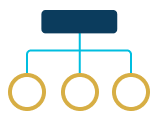
Provider
Optimize staff resources (hours and utilization) and support persons-served better using today’s technology.
Demographic shifts will result in a growing divergence in the availability of caregivers and those who need care. As a result, the cost of caregivers will increase significantly over the next decade.
Technology solutions provide support that is less intrusive and more inclusive, all while increasing the overall quality of life in individuals served. Technology solutions can provide individuals with tools to help them control more of their life without direct intervention by caregivers. Reduced presence of caregivers encourages individuals to try and do more for themselves, learning and gaining self-confidence and independence.
As a hub of information, the Technology Resource Center serves as a guide to implement technology solutions—it all starts with a conversation.
Begin the process to:
- Learn how to get started
- Find out how it can be funded
- See what other providers are doing
- Engage and gain consensus from family and staff








